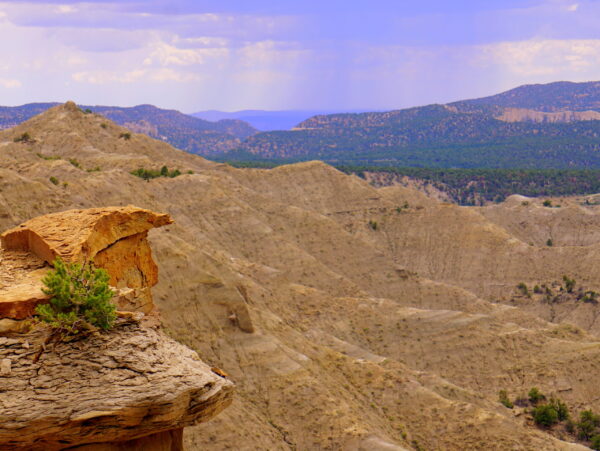On August 24, the State of Utah, and Garfield and Kane counties filed a lawsuit in U.S. District Court against President Biden’s designation of Bears Ears and Grand Staircase-Escalante National Monuments.
The action follows on the heels of President Biden’s restoration of the two monuments last year after President Trump downsized both in 2017. President Bill Clinton designated the 1.9 million-acre GSENM in 1996, and President Barack Obama designated the 1.3 million-acre Bears Ears in the final days of his presidency in 2016.
Both designations were highly controversial in Utah, and attracted national attention.
The state’s lawsuit has been anticipated by many after Utah’s Governor Cox warned in April 2021 that Utah would likely sue if the White House acted “unilaterally” in restoring the monuments.
Both monuments were declared by executive authority granted under the 1906 Antiquities Act, which allows presidents to designate national monuments for the protection of historic landmarks, historic or prehistoric structures, and “other objects of historic or scientific interest.”
The Antiquities Act also allows the ground around the object to be designated a monument, but limits that land to the “smallest area compatible with the proper care and management” of the qualifying landmark, structure, or object.
Utah’s main argument contends that the two monument designations grossly violate the “smallest area compatible” standard. “President Biden, like too many of his predecessors over the past hundred years, has ignored those limits, thereby transforming the Act ‘into a power without any discernible limit to set aside vast and amorphous expanses of terrain,’” the lawsuit states, with a quote from Chief Justice John Roberts.
The lawsuit also argues that the size of the monuments also makes it difficult for land managers to protect qualifying objects. “President Biden’s reservations … do not actually protect the things that might qualify as monuments within them,” the text reads.
“In fact,” the plaintiffs continue, “the reservations endanger what they purport to protect. They draw new attention to artifacts, features, and fossils on the land—causing a wave of vandalism, defacement, and desecration. They draw visitors from all over the world who trample on flora, traumatize fauna, and leave trails and roads overrun with trash and human waste.”
Both Utah senators and all four of Utah’s U.S. representatives joined Utah leaders in writing a joint statement supporting the lawsuit. “We now challenge this repeated, abusive federal overreach to ensure that our public lands are adequately protected and that smart stewardship remains with the people closest to the land,” they wrote.
The timing of Utah’s lawsuit and the arguments it makes are largely based on a statement Chief Justice John Roberts made in March, 2021. At the time, the Supreme Court declined to hear a case from Massachusetts fisherman against the Northeast Canyons and Seamounts Marine National Monument, also designated by President Obama in 2016.
Even though the court refused to hear the case, Roberts startled the environmental movement when he questioned whether presidents have abused the 1906 law by ignoring the “smallest compatible area” restriction. “Somewhere along the line, however, this restriction has ceased to pose any meaningful restraint,” Roberts wrote.
Pacific Legal Foundation senior attorney Jonathan Wood told E&E News that Roberts’ written comments should be a “very strong signal” to begin developing new challenges to bring before the Supreme Court. Utah read that signal, and drafted their lawsuit to fit what challenge Roberts is inviting.
Environmental groups are not pleased. SUWA wrote that by filing the lawsuit, Utah’s political leaders are “running roughshod over those who live closest to Utah’s national monuments.”
The Center for Western Priorities said that Utah’s lawsuit was a “poor decision,” and that “the State of Utah is wasting taxpayer money.”
Woody Lee, executive director of Utah Diné Bikéyah, told Fox 13 News that he would prefer Utah to drop the lawsuit. “This should not go any further and we should all come to an agreement and an understanding that we need to heal and move forward,” he said. Never mind that a coalition of environmental and tribal groups are still actively suing the federal government over President Trump’s decision to reduce the monuments. Now Lee’s group is considering whether to intervene in Utah’s new litigation.
Even with Chief Justice Roberts strongly inviting a better case to challenge the latitude of the Antiquities Act, no challenge is a slam-dunk. President Biden’s administration and the Dept. of the Interior have not yet responded to the lawsuit, but they will likely argue that even a whole landscape can be defined as “an object of historic or scientific interest.”
Also posing a challenge to Utah as a plaintiff, is that the Antiquities Act grants the president power to declare monuments or decide what objects are worth protecting, in his sole discretion. Past court decisions have ruled that presidents have vast power in the word “discretion” which has caused several legal challenges to fail.
– The Byway
Feature image caption: A thunderstorm over Bryce Canyon, as seen from The Blues between Henrieville and Escalante, on the Grand Staircase National Monument, Aug. 26, 2022.

Find more information about scoping in GSENM Opens Public Scoping Period.

